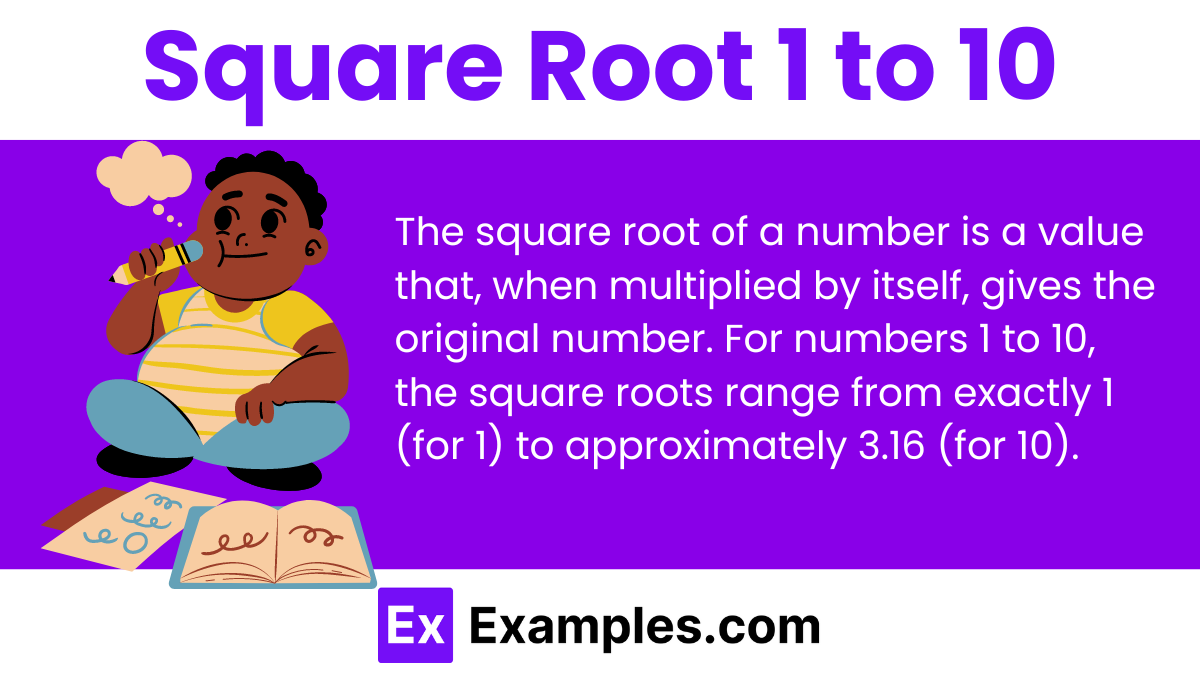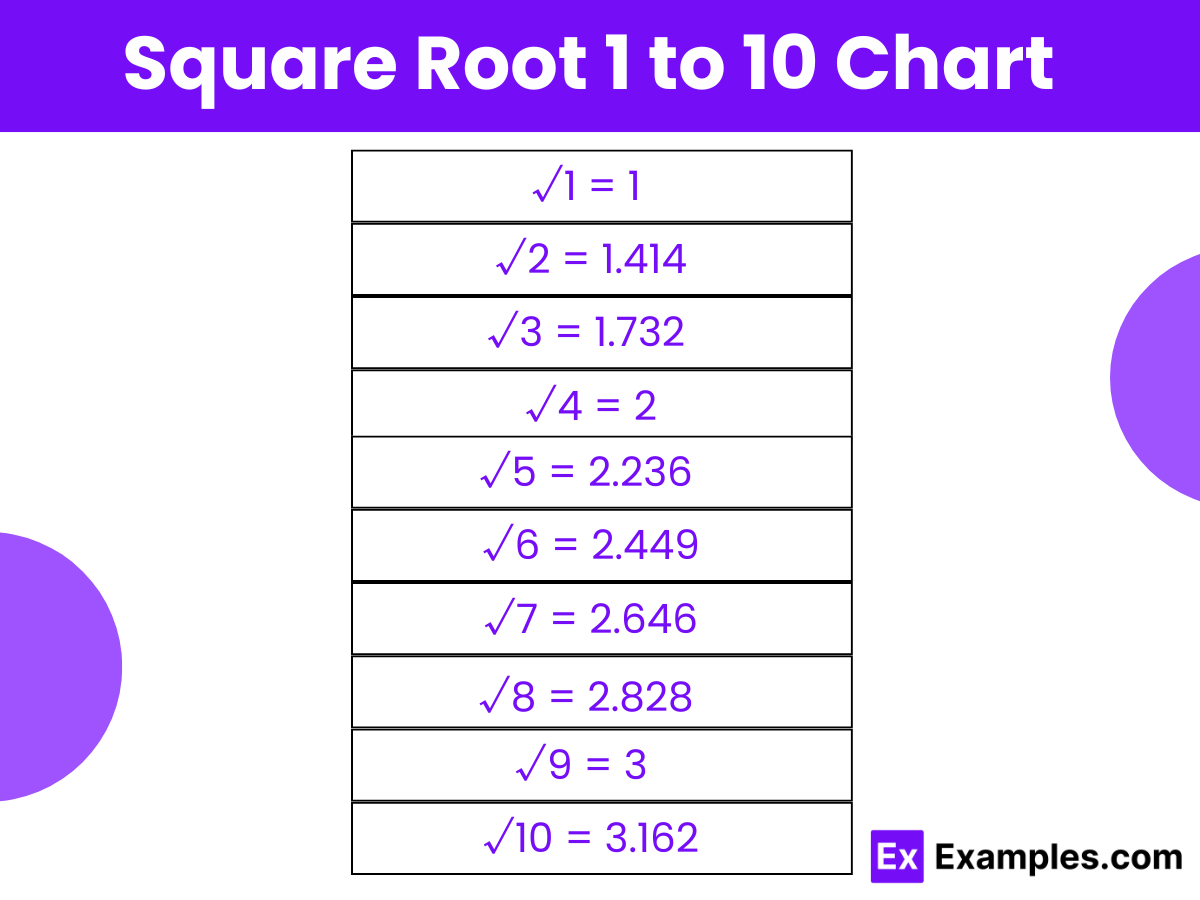What is the square root of 1?
0
1
2
3


Exploring square roots from 1 to 10 reveals the fundamental relationship between numbers and their roots, encompassing rational and irrational numbers. Understanding square and square roots is essential in algebra and number theory, providing insights into quadratic equations and the least square method in statistics. These roots represent the inverse operation of squaring, revealing the original integer from its square. Mastery of square roots enhances numerical literacy, facilitating deeper comprehension of mathematical principles and applications.
The square root of numbers from 1 to 10 refers to the value that, when multiplied by itself, yields the original number. It encompasses both rational and irrational numbers and is a fundamental concept in algebra, number theory, and mathematical analysis. Understanding square roots is essential for solving equations, evaluating expressions, and understanding the relationship between squares and their roots.
In exponential form: (x)¹/²
Where x is any number between 1 to 10.

Download Square Root 1 to 10 in PDF
| Square Root from 1 to 10 |
| √1 = 1 |
| √2 = 1.414 |
| √3 = 1.732 |
| √4 = 2 |
| √5 = 2.236 |
| √6 = 2.449 |
| √7 = 2.646 |
| √8 = 2.828 |
| √9 = 3 |
| √10 = 3.162 |
The given content provides the square roots of numbers from 1 to 10, both exact values and approximate values. Square roots represent the number which, when multiplied by itself, yields the original number. For example, the square root of 9 is 3 because 3 multiplied by itself equals 9. The approximate values are rounded to three decimal places for convenience. Understanding square roots is crucial in various mathematical applications, including geometry, algebra, and calculus.
| √1 = 1 |
| √4 = 2 |
| √9 = 3 |
This content lists the square roots of numbers from 1 to 10, focusing on perfect square values where the square root is an integer. Understanding these square roots helps grasp fundamental mathematical relationships and aids in solving equations and evaluating expressions.
| Square Root of 1 | Square Rootof 2 | Square Rootof 3 | Square Rootof 4 | Square Root of 5 |
| Square Rootof 6 | Square Rootof 7 | Square Rootof 8 | Square Rootof 9 | Square Rootof 10 |
| √2 = 1.414 |
| √3 = 1.732 |
| √5 = 2.236 |
| √6 = 2.449 |
| √7 = 2.646 |
| √8 = 2.828 |
| √10 = 3.162 |
This content provides the square roots of numbers from 1 to 10, including non-perfect squares, offering both exact and approximate values. Understanding these square roots is essential for numerical calculations and mathematical applications where precise values are required.
To calculate the square roots of numbers from 1 to 10:
The long division method involves repeatedly dividing the number whose square root is being calculated by an approximation of its square root, adjusting the approximation until the desired level of accuracy is achieved.
While calculators are convenient, manual calculation methods can improve mental math skills and provide a deeper understanding of mathematical concepts. Additionally, in certain situations where calculators are unavailable, manual methods may be necessary.
Knowing how to calculate square roots is valuable in various fields, including engineering, physics, and finance. It is used in tasks such as estimating distances, calculating areas, and solving quadratic equations.
Text prompt
Add Tone
10 Examples of Public speaking
20 Examples of Gas lighting
What is the square root of 1?
0
1
2
3
Which of the following is true about the square root of 4?
It is a fraction
It is an irrational number
It is an integer
It is equal to 5
The square root of 9 is closest to which of the following values?
3
4
2
5
If the square root of a number is 2, what is the original number?
3
4
5
6
What is the square root of 16?
1
2
3
4
Which number has a square root of 5?
20
25
30
35
What is the square root of 36?
6
7
8
9
Which of the following is the square root of 49?
7
8
9
10
If √x = 8, what is the value of x?
64
56
72
80
The square root of which number equals 10?
90
100
110
120
Before you leave, take our quick quiz to enhance your learning!

